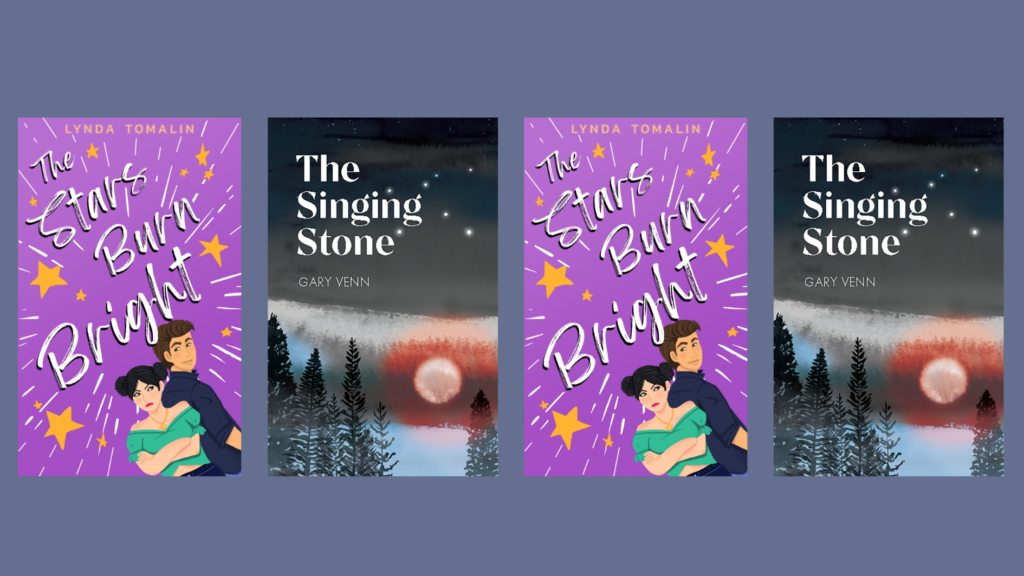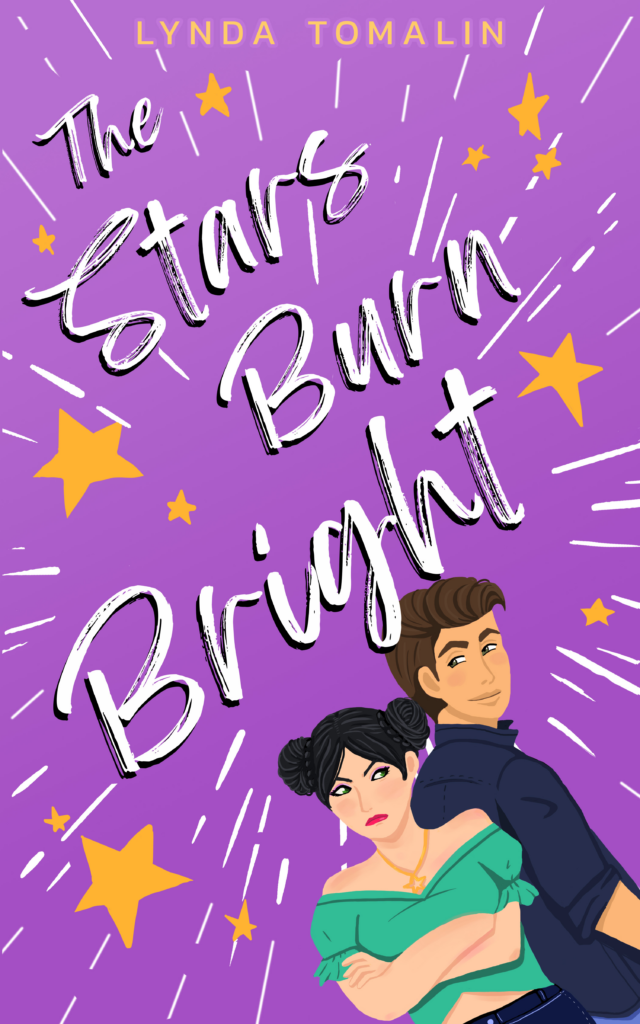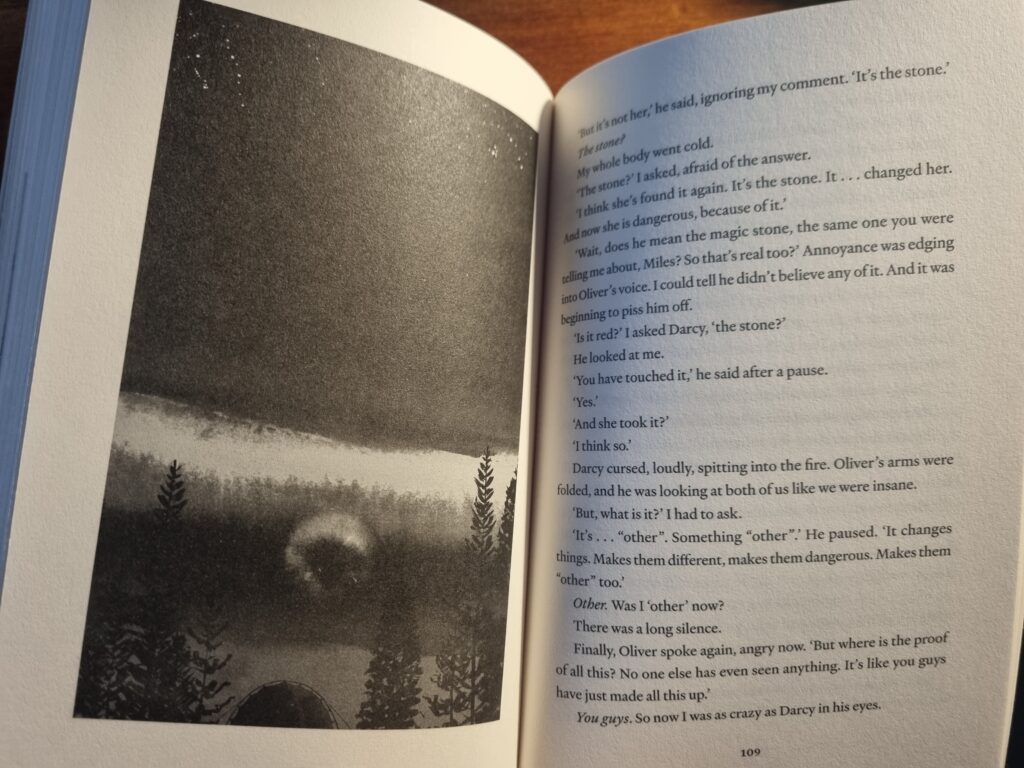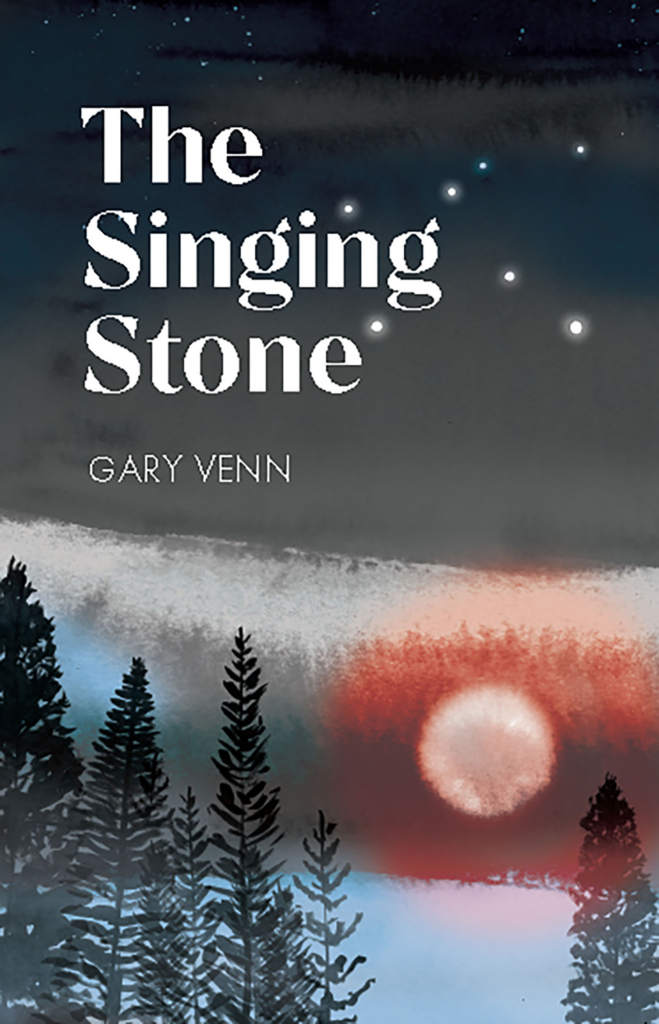In this batch of reviews, Charlotte Fielding shares her thoughts on a wholesome romance read and a spooky Stranger Things-style debut.

The Stars Burn Bright, by Lynda Tomalin
The Stars Burn Bright is a sweet YA romance, told from the dual perspectives of Essie, a seventeen-year-old who is looking forward to working on her sewing business over the summer, and Jax, Essie’s older brother’s best friend, who comes to stay with her family for reasons we learn over the course of the book.
At first, Essie is begrudging about Jax staying with her family because he moves into the spare room where she does her sewing. On top of that, Essie also overhears Jax telling David, her brother, that she’s an annoying kid. Jax, on the other hand, seems to be mostly befuddled as to why Essie is so resentful of him being there. But, as he pays more attention to her, Jax slowly comes to realise how important Essie’s sewing business is to her.
Essie’s family pressures her to get a ‘normal’ job, which seems to be mostly an issue of miscommunication. They view her sewing business as a hobby, that is until Jax comes along and stands up for her, explaining to her family how successful it is. This conflict is a little surprising given her parents own a vet clinic, so it’s not like they are average employees themselves. I would have thought they would give Essie a bit more of a chance. That’s a minor quibble, however, and the issue regarding how she is spending her time that summer allows for some relationship development between Essie and her mother in particular.
Essie and Jax are both likeable characters, and the way Tomalin alternates each chapter from their differing points of view offers readers the chance to understand their perspectives and motivations
Essie and Jax are both likeable characters, and the way Tomalin alternates each chapter from their differing points of view offers readers the chance to understand their perspectives and motivations. The main conflict between them seems to be mostly stubbornness, overly dramatic emotions, and a bit of miscommunication, which can be frustrating from an adult perspective but certainly seems legit when I recall what it was like being a teenager.
I appreciated Essie’s boldness both in fighting for her creative business despite opposition from her family and in asserting her boundaries when it came to receiving attention from a less-wholesome boy. There is no sexual assault, but this boy does try to push his luck in a kissing scene. Thankfully, Essie doesn’t let him coerce her into doing something she’s uncomfortable with; I liked that she stood up for herself and didn’t need to be rescued by Jax.
Essie continues to stay true to herself throughout the book as she slowly sheds some of her own insecurities
The tension between Jax and Essie feels a little overplayed in the beginning, but it’s all part of the romance genre, and this novel hits all the expected beats. Jax’s past problems that led to him staying at Essie’s are gradually revealed, and then resolved, in what feels like a genuine way. Essie continues to stay true to herself throughout the book as she slowly sheds some of her own insecurities. She is full of big dreams and big feelings, while Jax is a little more steady and balances her out in that, and many other, ways. It’s no surprise that Essie falls for Jax; he is charming and respectful and can cook too. There was a strong theme of consent throughout their relationship, with Jax insisting he won’t touch Essie unless she one hundred per cent wants him to. This turns into an adorable callback later that shows that consent doesn’t get in the way of sweet, intimate moments, which is a great message for teens to read.
The Stars Burn Bright is a sweet and wholesome romance for YA readers. Tomalin does a great job weaving realistic issues and complex family dynamics together with an adorable love story.

The Singing Stone, by Gary Venn
The Singing Stone is the debut novel from illustrator and writer Gary Venn. Marketed as a YA book for fans of Stranger Things, it tells the story of Miles, a 14-year-old who moves to the Coromandel Peninsula with his family after his parents buy an old camping ground.
There is work to be done to spruce up the campground, and though Miles helps his parents with chores, he’s impatient to explore his new surroundings. He attends the local school, makes a new friend, and hears about an odd teenager with a missing eye who lives in a caravan nearby.
Early in the story—while helping his dad with a task—Miles finds a smooth, reddish stone and puts it in his pocket, setting in motion the events of the book.
There’s not much explanation as to why Miles keeps this stone, but I guess it’s not unusual for people to pick up cool rocks. Even so, I expected a little more exposition about what attracted Miles to keep this rock, maybe some compulsion about it that would justify his attachment to it throughout the book. It’s not a bad premise, but I wanted a bit more development to understand why he held on to this thing despite the unease and conflict it caused. (Perhaps the only explanation is that he is a teenager. In which case, fair play I suppose.) The rock begins to glow and causes Miles to hear singing. If that wasn’t alarming enough, silver marks begin to appear on his arms.
Early in the story, Miles finds a smooth, reddish stone and puts it in his pocket, setting in motion the events of the book
Some of the secondary characters felt like they were there just to tick the archetype or trope box. There was the new best friend sidekick, Oliver—who is immediately loyal to Miles despite the lack of history between the two—the nasty bullies at school, and the sister who “texted all afternoon and went on Facebook” which didn’t ring true to me; teenagers don’t really use Facebook. There was the gruff but kind teacher who Miles goes to for scientific guidance, the old man who shows up and makes enigmatic comments, and another new friend for Miles: Melinda, a girl staying at the campground with her mother. My favourite character was the one-eyed teenager who lived in the caravan and came to play a critical role towards the end.
The first half of the book felt slow and somewhat contrived, but the pace picked up in the second half and there was enough action to keep me turning the page. The language was definitely at the younger end of YA, almost middle grade. I think it would appeal to children around 10 to 13 years of age. In contrast, the black-and-white art in the book was more adult: abstract and atmospheric rather than illustrative. I thought they were quite cool, although unfortunately a little muddy in the printing, but my 13-year-old didn’t like them at all.

The isolated setting of Coromandel felt authentic and there were a lot of descriptions of the wild outdoors through Miles’ explorations. I don’t think the comparison to Stranger Things does the book any favours; yes, it involves the paranormal, but I felt it lacked the humour, heart, genuine ensemble cast, and high stakes of Stranger Things. My expectations were higher than they would have been if the book had been compared to another supernatural YA novel instead. The action scene at the end is well-paced and dramatic, though there were some loose threads left hanging that could have been tied up more effectively.
Overall, The Singing Stone is an easy read and an adventurous story that would appeal to tween readers who like something a bit spooky.


Charlotte Fielding
Charlotte Fielding is a writer who lives in Wellington with her son and dog. You can find her talking about books and writing on TikTok, exploring history, art, and culture on Substack, or at girlgotwords.com.



